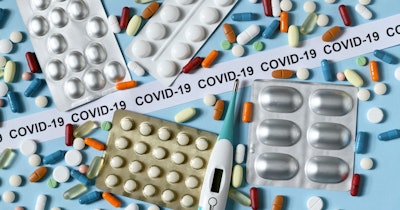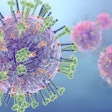
While the Test to Treat initiative created by the Biden administration in March 2022 greatly increased access to COVID-19 testing and antiviral treatment, researchers have found that access to these centers is often limited by geography.
Furthermore, study findings show that disparity in access to testing and antiviral treatment disproportionately affects minority groups, despite their increased vulnerability to COVID-19 infection.
In a study published Wednesday in JAMA Network Open, researchers examined disparities in access to COVID-19 antiviral treatments for minority and high-risk populations, especially those in rural areas.
The Test to Treat program was created with the aim of enabling individuals throughout the U.S. to go to designated one-stop locations offering COVID-19 testing, the opportunity to speak to a clinician, and antiviral prescriptions written and filled for free.
The study authors sought to examine possible geographical disparities in equity of access to these Test to Treat centers, especially for historically underserved minority groups and those living in rural areas.
Using the published geolocations of all 2,227 COVID-19 Test to Treat sites as of May 4, 2022, the researchers calculated drive times from the population centers of census tracts to their closest respective Test to Treat sites, while stratifying by tract-level population demographics.
The researchers noted that most sites were concentrated in and around metropolitan centers. They found that 15% of the total U.S. population, including 17% of all people 65 or older, lived more than 60 minutes away from the nearest site; for rural residents, the percentage living more than 60 miles away from a site was 59%.
Among demographic groups, 30% of American Indian or Alaskan Native people had the longest drives to access these sites; this percentage included both rural and urban populations.
“American Indian or Alaskan Native populations had longer drive times even after accounting for rurality, suggesting that they are uniquely isolated from antiviral access despite bearing a disproportionate COVID-19 burden,” the researchers noted in the study.
Furthermore, the authors emphasized that geographical accessibility did not guarantee equity: while more Asian, Black, and Hispanic people lived closer to Test to Treat sites, people in these minority groups have been less likely to receive outpatient COVID-19 therapeutics than white people, despite their elevated risk of infection and severe disease.
In addressing the limitations of their study, the researchers noted that their use of tract population centers for data analysis inherently assumed that demographic subgroups were not clustered within the tracts. Additionally, while drive time is a widely accepted measure for geographic accessibility, the study did not account for unequal transportation access -- i.e., access to a vehicle, ridesharing programs, or public transportation, which may be limited in rural areas in particular.
To address these disparities in access, the authors suggest that the Test to Treat initiative ensure the inclusion of rural and tribal facilities, safety-net hospitals, and local pharmacies. Furthermore, they advise that initiative resources be allocated with consideration of equity metrics, and that “low-tech, high touch” in-person outreach using trusted community stakeholders be prioritized.



















